
The red-toothed shrews of the subfamily Soricinae are one of three living subfamilies of shrews, along with Crocidurinae and Myosoricinae. In addition, the family contains the extinct subfamilies Limnoecinae, Crocidosoricinae, Allosoricinae and Heterosoricinae. These species are typically found in North America, northern South America, Europe and northern Asia. The enamel of the tips of their teeth is reddish due to iron pigment. The iron deposits serve to harden the enamel and are concentrated in those parts of the teeth most subject to wear.
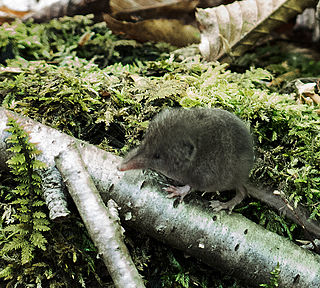
The North American least shrew is one of the smallest mammals, growing to be only up to 3 inches long. It has a long pointed snout and a tail never more than twice the length of its hind foot. The dense fur coat is either grayish-brown or reddish-brown with a white belly. Its fur becomes lighter in the summer and darker in the winter. Although similar in appearance to several species of rodents, all shrews are members of the order Eulipotyphla and should not be mistaken for a member of the order Rodentia. The North American least shrew's eyes are small and its ears are completely concealed within its short fur, giving it very poor eyesight and hearing.
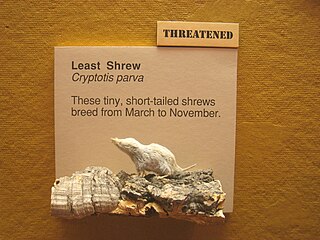
The genus Cryptotis is a group of relatively small shrews with short ears, which are usually not visible, and short tails, commonly called small-eared shrews. They have 30 teeth and are members of the red-toothed shrew subfamily. Since 1992, Neal Woodman at the United States National Museum has been in the process of revising the genus. To date, this has resulted in an increase in the number of species from 12 to 30.

Goodwin's broad-clawed shrew is a species of mammal in the shrew family, Soricidae. Body length and size of adults average 9.49 cm and 7.0 grams respectively making it a relatively larger shew. What distinguishes this from other shrews are its long claws.
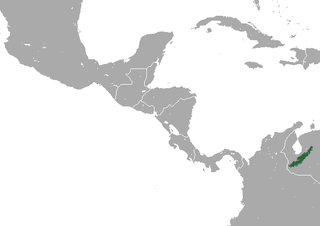
The Merida small-eared shrew is a species of shrew that is endemic to Venezuela.
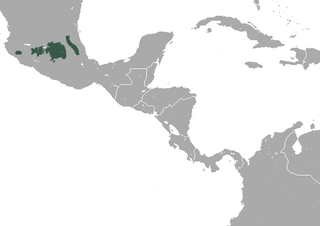
The Central Mexican broad-clawed shrew is a species of mammal in the family Soricidae. It is found in the highlands above 2000 m in the Mexican states of Colima, Hidalgo, Jalisco, Michoacán, Mexico, and Puebla, Morelos, and in the Mexican Federal District

The tropical small-eared shrew is a very small mammal of the family Soricidae. The species is found in the eastern highlands of Chiapas, Mexico, and parts of Belize and Guatemala. Until recently, it was considered a subspecies of the North American least shrew, but it has gained species status. Its relationship with the Central American least shrew remains to be studied.
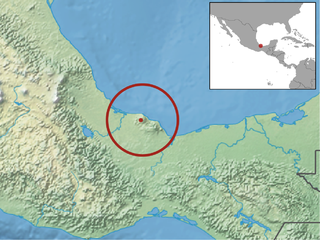
Nelson's small-eared shrew is a species of mammal in the family Soricidae. It is endemic to eastern Mexico.
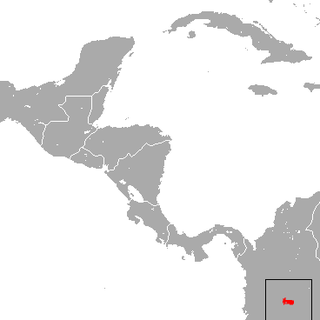
The Eastern Cordillera small-footed shrew is a species of mammal in the family Soricidae. It is endemic to Colombia, where it is known from the western slopes of the central Cordillera Oriental at elevations from 1,300 to 2,715 m. It resembles C. colombiana. The species is only known from four individuals collected at two localities, the most recent record being from 1925.

The Colombian small-eared shrew is a species of mammal in the family Soricidae. It is endemic to Colombia, where it is known from the Cordillera Central in Antioquia Department at elevations from 1,750 to 2,800 m. It is found in montane forest and cultivated areas. It resembles C. brachyonyx.

The Medellín small-eared shrew is a species of mammal in the family Soricidae. It is endemic to Colombia, where it is known from the northern parts of the Cordillera Occidental and Cordillera Central at elevations from 2,500 to 2,800 m. The species is found in montane forest and cultivated areas, and is subject to predation from the crab-eating fox. The specific name refers to the city of Medellín.
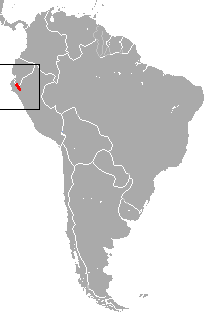
The Peruvian small-eared shrew is a species of mammal in the family Soricidae. It is known only from northern Peru, where it has been found in shrubby "elfin" cloud forest in the Andes at elevations from 2,050 to 3,150 m. The species may also be present in Ecuador. It has the southernmost range of any shrew in South America.
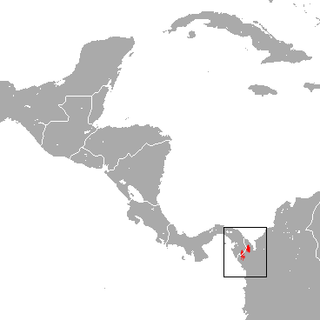
The Darién small-eared shrew is a species of mammal in the family Soricidae. It is known only from montane regions along the border between Colombia and Darién Province, Panama, where it has been found in rainforest at elevations from 1400 to 1500 m. It has terrestrial habits.
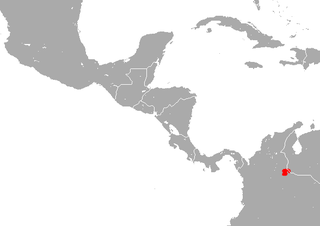
The Tamá small-eared shrew is a species of mammal in the family Soricidae. It is known from the Cordillera Oriental of Colombia and the Páramo de Tamá of western Venezuela, where it has been found primarily in cloud forest at elevations between 2,380 and 3,330 m. Its range includes Venezuela's El Tamá National Park. The closest relatives of the species are C. meridensis and C. thomasi.

The Guatemalan broad-clawed shrew is a species of small-eared shrew in the family Soricidae. It is known from Guatemala and the Mexican state of Chiapas, where it has been found in montane forests of oak, pine and fir, as well as secondary forest, at elevations above 2,100 m (6,900 ft). It feeds on insects. Deforestation and habitat fragmentation are major threats, particularly in Chiapas. It was formerly considered conspecific with C. goldmani.
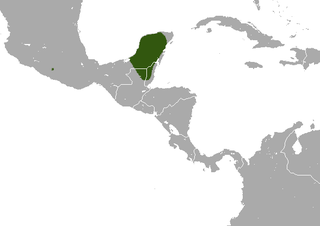
The Yucatan small-eared shrew is a species of mammal in the family Soricidae. It is mainly known from lowlands of Guatemala, Belize and Mexico's Yucatán Peninsula, where it has been found in dry scrubland and tropical dry forest at elevations below 100 m. It is threatened by deforestation.

Merriam's small-eared shrew is a species of mammal in the family Soricidae. It is found in Chiapas, Guatemala, El Salvador, Honduras, Nicaragua and Costa Rica.
The Oaxacan broad-clawed shrew is a species of mammal in the family Soricidae. It is found in Oaxaca in Mexico.

















